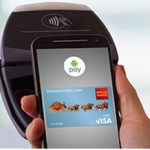Consumer use of mobile payments has taken a step back, according to new research from Auriemma Consulting Group. The New York City-based firm found that mobile-payments usage is down 5 percentage points to 25% of consumers surveyed from 30% a year ago. And that decline is expected to continue into the fourth quarter, Auriemma says.
Backers of such services, with Apple Pay, Android Pay, and Samsung Pay as the standard bearers, would rather the adoption rate increase. But, reasons for the lackluster adoption rate abound.

Chief among them is consumer perception about security. Thirty-two percent of the more than 1,500 U.S. consumers surveyed who owned a mobile-payments capable smart phone cited security concerns as a top impediment to making a mobile payment. Fewer—21%—believed the payment method actually was unsafe.
“For those who have not tried mobile payments yet, there’s a persistent fear of the unknown,” says Jaclyn Holmes, Auriemma director of payment insights, in an email to Digital Transactions News. “More non-users say they’re unsure whether mobile payments are secure, compared to those who have a more firm belief that they’re unsafe. However, once they try mobile payments these fears tend to dissipate. When we ask users what the main benefits of mobile payments are, the added layer of security has always been a top mention.”
Most consumers—58%—want assurances from card issuers that mobile-payments fraud will be handled by the banks the same way they do with fraudulent transactions made with traditional card payments.
Merchant acceptance is another complication, but even when merchants do have the technology, their employees may be an impediment. Fifty-five percent of consumers said the unfamiliarity of store personnel was a problem when trying to make a mobile payment. Incomplete transactions, 46%, and transactions taking too long, 35%, were other top checkout problems.
These issues add up to retreating usage. How to counter it? Holmes says adding rewards or loyalty programs can help. Samsung Pay added a rewards program in 2016, for example.
“Incorporating rewards or a points program (such as Samsung Rewards) helps boost usage,” Holmes says. “Those who have received an incentive use their respective mobile ‘Pay’ more frequently than those who have not–but merchant acceptance will be the main driver. Consistent mobile-payment usage requires muscle memory. The number one reason people don’t always use it (even at places where they know it is accepted) is simply because they forgot. Cardholders need to be able to use mobile payments at a large number of merchants to form the habit at the point of sale.”
Merchants can do other things, too. Most mobile-pay users are less likely to attempt a transaction if the cashier “looks like they’d be unfamiliar with it,” Holmes says.
To aid, merchants should educate their cashiers on if mobile payments are accepted. “Cashiers should also be aware that mobile payments add a second layer of security,” Holmes says. “If the merchant wants customers to use mobile payments at the point of sale, cashiers can share this information as an added benefit. In terms of reducing friction, merchants that do not accept NFC [near-field communication technology used by Apple Pay and Android Pay] should be aware that Samsung Pay works like a magnetic-stripe card–it should work anywhere that accepts cards.”





